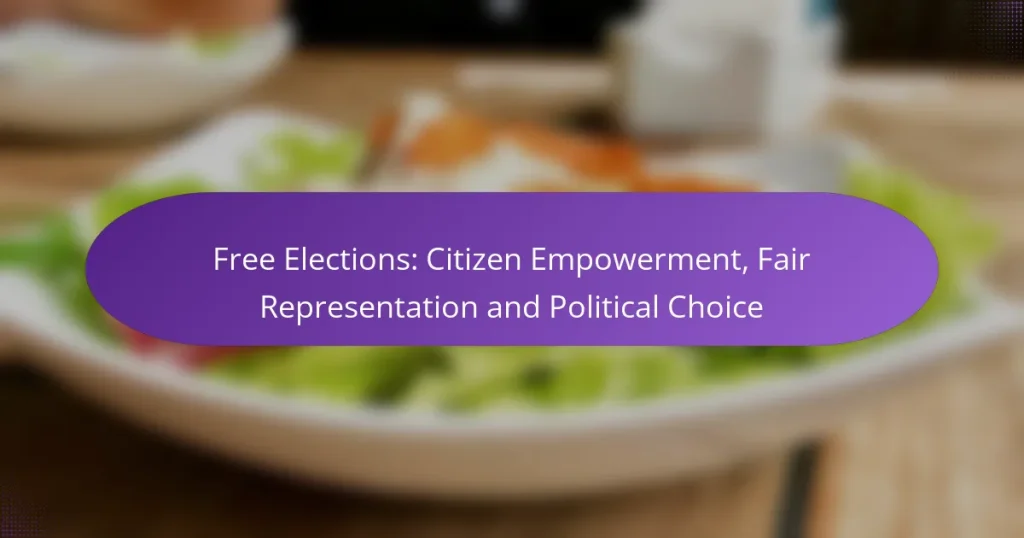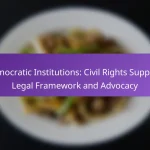Free elections are a cornerstone of democracy, empowering citizens to select their representatives and shape government policies. By ensuring fair representation and equal voting rights, these elections foster an engaged electorate that reflects the diverse voices within society. Ultimately, the political choices made during elections influence governance and resource allocation, impacting the daily lives of citizens and their rights.
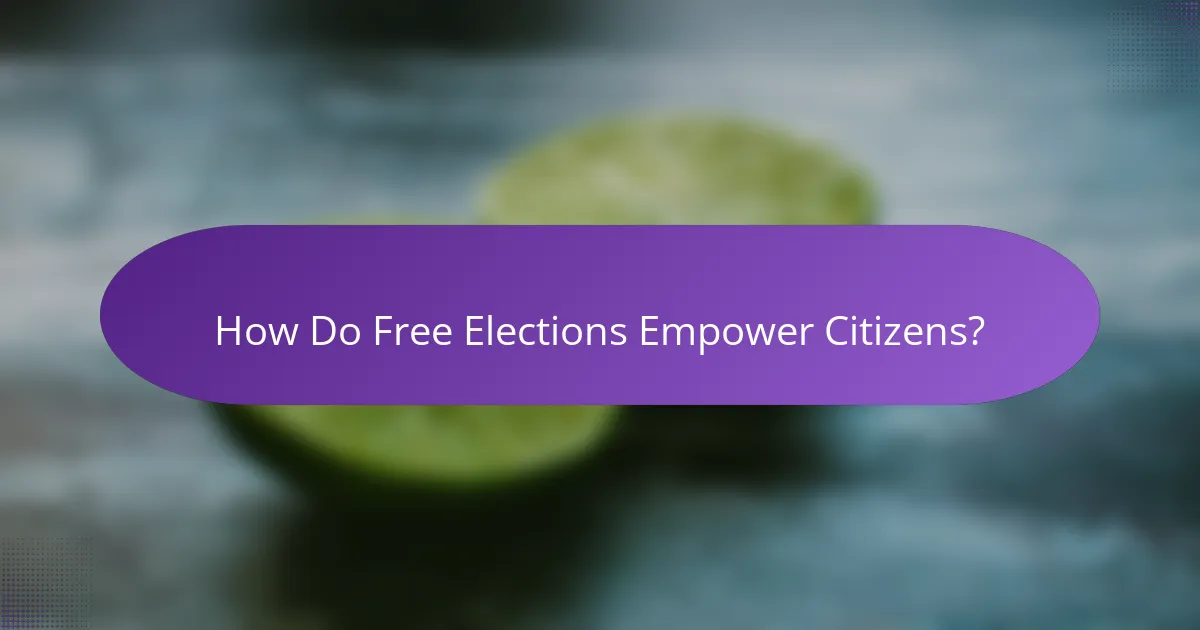
How Do Free Elections Empower Citizens?
Free elections empower citizens by providing them with the opportunity to choose their representatives and influence government policies. This process fosters a sense of ownership and responsibility among the electorate, leading to a more engaged and informed citizenry.
Increased political participation
Free elections encourage higher levels of political participation by allowing citizens to express their preferences through voting. When people feel their votes matter, they are more likely to engage in the electoral process, attend town hall meetings, and participate in political discussions.
For example, countries with regular, fair elections often see voter turnout rates ranging from 60% to 80%, reflecting a strong commitment to civic duty. This participation can lead to a more representative government that reflects the diverse views of the population.
Enhanced accountability of representatives
Free elections enhance the accountability of elected officials by enabling citizens to hold them responsible for their actions. When representatives know they must answer to their constituents every election cycle, they are more likely to prioritize the needs and concerns of the public.
This accountability is crucial in preventing corruption and ensuring that policies align with the electorate’s interests. Citizens can assess their representatives’ performance based on their track record and decide whether to re-elect them or choose alternatives.
Promotion of civic engagement
Free elections promote civic engagement by motivating citizens to become active participants in their communities. Engaged citizens are more likely to volunteer, advocate for issues they care about, and collaborate with others to drive change.
For instance, initiatives like voter registration drives and community forums can increase awareness and involvement in local governance. This engagement fosters a culture of participation that extends beyond just voting.
Fostering informed decision-making
Free elections foster informed decision-making by encouraging citizens to educate themselves about candidates and policies. Access to unbiased information and diverse viewpoints allows voters to make choices that reflect their values and priorities.
To support informed voting, citizens should seek out multiple sources of information, such as non-partisan organizations, debates, and candidate forums. This approach helps to counter misinformation and ensures that decisions are based on facts rather than emotions or assumptions.

What Are the Key Principles of Fair Representation?
Fair representation ensures that all citizens have an equal voice in the political process, reflecting the diversity of the population in decision-making. Key principles include equal voting rights, proportional representation systems, and redistricting fairness, all of which work together to empower voters and enhance democratic legitimacy.
Equal voting rights
Equal voting rights guarantee that every citizen has the same opportunity to participate in elections, regardless of their background. This principle is fundamental to democracy, as it ensures that each vote carries equal weight in influencing outcomes.
To promote equal voting rights, jurisdictions often implement measures such as automatic voter registration and accessible polling places. Voter ID laws can sometimes create barriers, so it is essential to balance security with accessibility to ensure all eligible voters can cast their ballots.
Proportional representation systems
Proportional representation systems aim to allocate seats in the legislature in accordance with the percentage of votes each party receives. This contrasts with winner-takes-all systems, where only the leading candidate secures representation, often marginalizing smaller parties.
Common forms of proportional representation include party-list systems and single transferable votes. These systems can lead to a more diverse political landscape, allowing for a broader range of viewpoints and interests to be represented in government.
Redistricting fairness
Redistricting fairness refers to the process of drawing electoral district boundaries in a way that reflects population changes and maintains equal representation. This process is crucial to prevent gerrymandering, where boundaries are manipulated to favor one party over another.
To achieve fair redistricting, independent commissions are often recommended to oversee boundary drawing. Transparency and public input during this process can help ensure that districts are drawn fairly, reflecting community interests rather than political agendas.
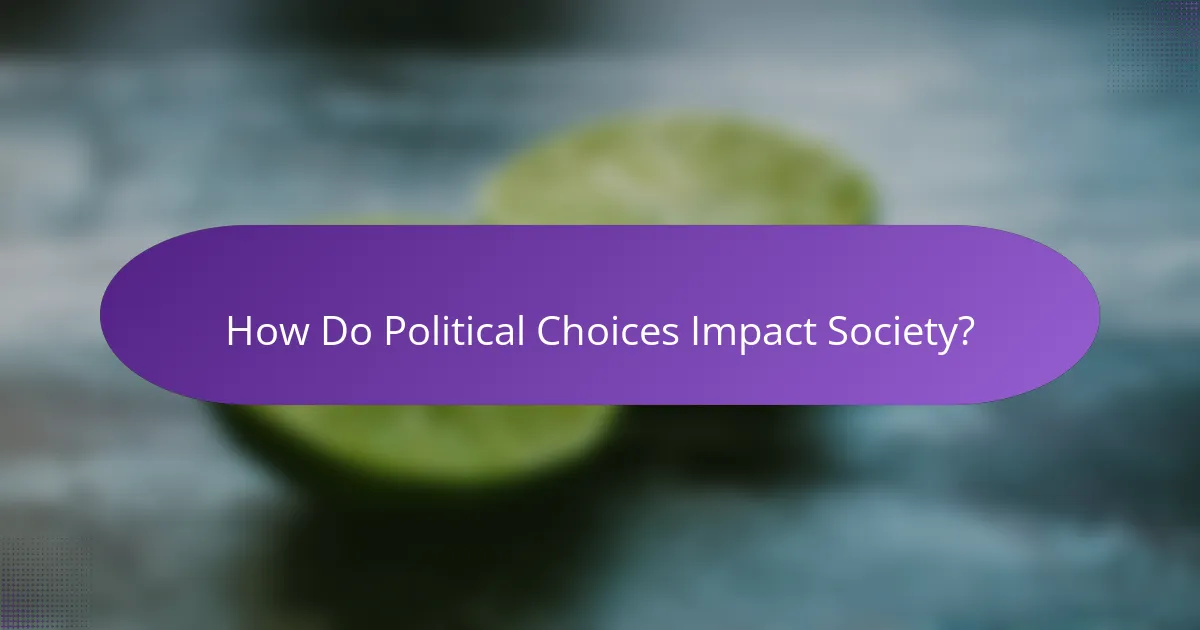
How Do Political Choices Impact Society?
Political choices shape the framework of society by influencing governance, resource allocation, and social norms. These decisions affect everything from local community services to national policies, ultimately determining how citizens experience their rights and responsibilities.
Influence on policy-making
Political choices directly impact policy-making by determining which issues are prioritized and how resources are allocated. For instance, a government elected on a platform of environmental sustainability may implement stricter regulations on pollution, while a different administration might focus on economic growth, potentially leading to deregulation.
Citizens can influence policy-making through their electoral choices, which reflect their preferences for specific issues. Engaging in the electoral process ensures that the policies enacted align with the public’s needs and values.
Reflection of public values
Political choices serve as a mirror for public values, showcasing what the electorate deems important. When citizens vote for candidates who advocate for social justice, healthcare reform, or education funding, they signal their collective priorities to lawmakers.
This reflection of values can lead to significant societal changes. For example, a shift towards progressive candidates often results in policies that promote equality and inclusivity, while conservative candidates may focus on traditional values and fiscal responsibility.
Promotion of diverse viewpoints
Political choices promote diverse viewpoints by allowing a variety of voices to be represented in governance. Elections that encourage multiple parties or independent candidates can lead to a richer political discourse and more comprehensive policy discussions.
Encouraging voter participation from various demographic groups ensures that different perspectives are considered. This diversity can help address the needs of underrepresented communities, fostering a more equitable society.
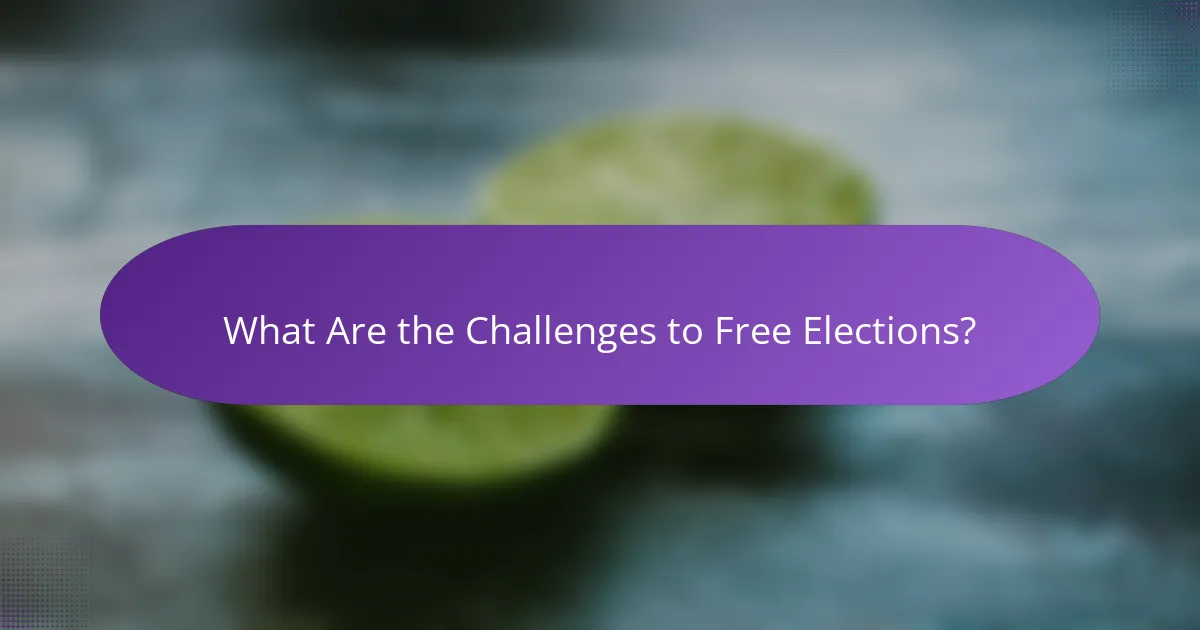
What Are the Challenges to Free Elections?
Free elections face several significant challenges that can undermine citizen empowerment and fair representation. Key issues include voter suppression tactics, gerrymandering, and disinformation campaigns, all of which can distort the electoral process and limit political choice.
Voter suppression tactics
Voter suppression tactics are strategies used to discourage or prevent specific groups from voting. These can include strict voter ID laws, reduced polling places, and limited voting hours, which disproportionately affect marginalized communities.
For instance, some states have implemented measures that require voters to present specific forms of identification, creating barriers for those who may not have easy access to these documents. Additionally, closing polling places in predominantly minority neighborhoods can lead to long lines and increased difficulty in casting votes.
Gerrymandering issues
Gerrymandering involves manipulating electoral district boundaries to favor one party over another. This practice can dilute the voting power of certain demographic groups, leading to unfair representation in legislative bodies.
For example, a party in power might draw district lines that cluster opposition voters into a few districts while spreading their own voters across many districts, ensuring they win more seats. This can result in a significant mismatch between the percentage of votes received and the number of seats won.
Disinformation campaigns
Disinformation campaigns aim to spread false or misleading information to influence public perception and voter behavior. These campaigns can take various forms, including social media posts, fake news articles, and misleading advertisements.
Such tactics can confuse voters about when, where, and how to vote, or they may promote false narratives about candidates and policies. Combatting disinformation requires vigilance and media literacy, as well as support for credible news sources to ensure that voters have access to accurate information.
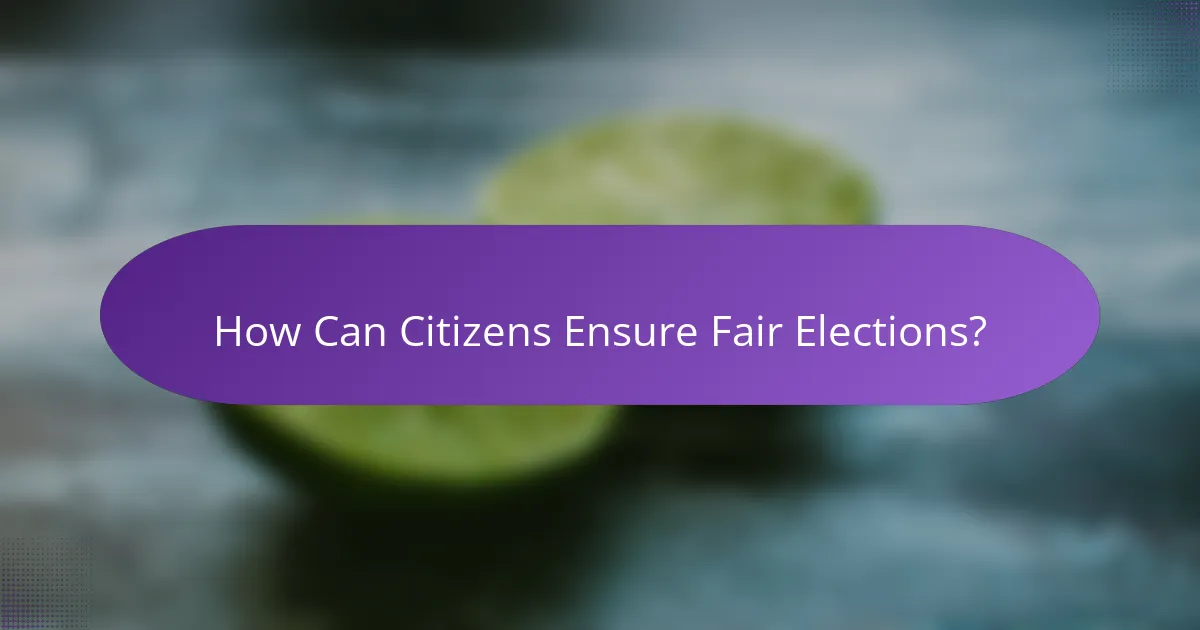
How Can Citizens Ensure Fair Elections?
Citizens can ensure fair elections by actively participating in the electoral process and advocating for transparency. Engaging in local advocacy and utilizing technology are two effective strategies that empower individuals to promote integrity and accountability in elections.
Participating in local advocacy
Local advocacy involves citizens working together to influence election processes and policies. This can include attending town hall meetings, joining advocacy groups, or participating in campaigns that promote fair electoral practices.
Citizens should focus on issues such as voter registration accessibility, equitable districting, and election security. By voicing concerns and proposing solutions, community members can create a more inclusive and fair electoral environment.
Utilizing technology for transparency
Technology plays a crucial role in enhancing election transparency. Citizens can leverage online platforms to monitor election processes, report irregularities, and access real-time information about candidates and policies.
Tools like election monitoring apps, social media campaigns, and online forums can facilitate communication and collaboration among voters. By staying informed and engaged, citizens can hold officials accountable and ensure that elections reflect the will of the people.
